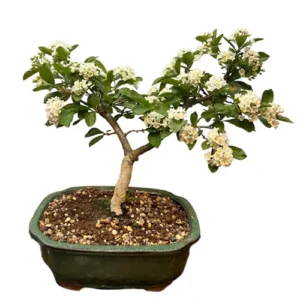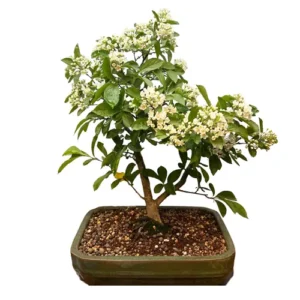Fraxinus Excelsior
Common Ash Bonsai
These hardy deciduous are often as hard to find as they are easy to keep. While not commonly stocked by bonsai retailers, these fast-growing specimens are decorated with dark green pinnate leaves. So tireless are these thick trunk trees they can be grown in the open ground.
Common Ash Bonsai Care Tips
Placement
Common Ash is spectacularly hardy requiring no special winter protection. Native to the northern hemisphere it is an inspired choice for an outdoor bonsai. During the summer, Common Ash can be kept in the full sun.
Watering
Regular watering across the growing season is vital for Common Ash. Of equal importance is maintaining consistent soil moisture, it can’t be allowed to dry out or you’ll invite die-back and leaf drop. During winter, watering is only to ensure soil moisture.
Feeding & Fertilising
Common Ash is not a bonsai with a big appetite. Feed only once or twice a year during the the growing season.
Pruning & Wiring
Trimming and pinching new shoots can occur continually as they arrive, to maintain the plant shape. thanks to the fast-growing nature of common ash, these can be easily trained with consistent addressing of the apex and the secondary shoots.
Common Ash Bonsai are suitable for plenty of styles including literati and forest. Wiring is achievable across the calendar year, though it should not be left on for longer than a growing season. We recommend using wires that match the branch’s thickness: if the wire you choose is too thick you will damage the bark. If it is too thin, it won’t be effective.
Repotting
Repotting your tree is an important way to provide a fresh and suitable soil mix and ensure appropriate root health. These vigorous trees require repotting every year ideally during the opening of spring.
Trees that are ready for repotting will require root pruning, a suitable new pot and appropriate soil mix.
When repotting, do not cut back the root mass by a large amount, and choose a well-draining soil mix that has a neutral or slightly higher PH value of 5-6 but not over 7. We tend to use a mixture of different speciality bonsai soils on our trees. Every species is different so please contact us for free soil-mix advice or to take advantage of our repotting service.
Bonsai trees aren’t only magnificent additions to an indoor oasis, they are more than capable of standing out in any garden. Many Bonsai species are incredibly hardy and withstand nature’s colder and damper turns with aplomb making them worthwhile outdoor plants. We have an extensive library of care guides for outdoor bonsai trees. It’s not about selecting the perfect bonsai, it’s about selecting the perfect bonsai for you.
Common Ash Bonsai - Typical Queries
How best to propagate Common Ash bonsai?
Common Ash can be propagated with seeds, cuttings or air layering. Seeds will require cold stratifying for some two to three months before sowing outside. This can be done in winter or with a refrigerator. Air layering should be done toward the end of Spring.
Do Common Ash bonsai get pests and diseases?
While they are typically free from such troubles when cultivated in Europe, Common Ash can fall prey to problems without sufficient care. On set of spot fungus and powdery mildew can require a particular pesticide, rust is also a potential disease for ash. Pests like caterpillars, ash borers, scale and aphids can cause problems.
Can you keep a Common Ash bonsai indoors?
It is not recommended to keep a Common Ash indoors they prefer full aeration and as much exposure to natural sunlight as they can get.





















